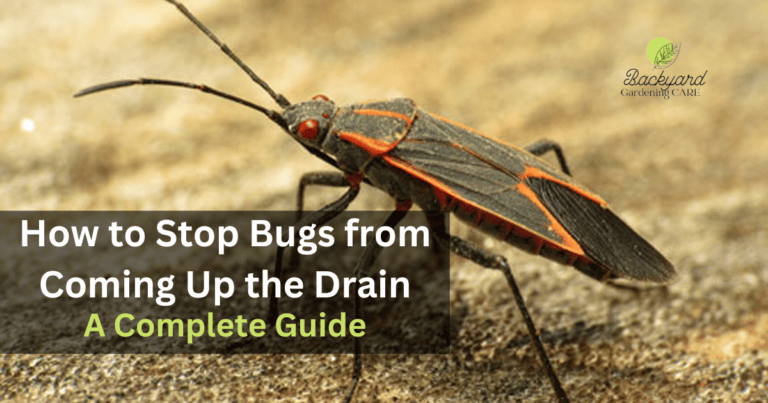Destroy Annoying Briars: 17 Clever Ways to Kill Briars for Good, No More Prickly Problems!
If you have overgrown areas plagued by stubborn briars, you know how painful and frustrating dealing with these prickly invaders can be. As an experienced landscaper and gardener, I’ve tried every trick to banish briars for good. I’ve battled my share of briars and brambles taking over gardens and yards. Briars like blackberry and wild rose bushes can quickly become a prickly nuisance if not controlled.
In this comprehensive guide, you will learn about 17 proven methods to effectively manage unwanted plant nuisances like briars and poisonous pokeweed, drawing from my experience. We’ll delve into both natural and chemical solutions, tools to combat tough overgrowth and strategies to prevent their resurgence. I’ll offer research-backed recommendations for dealing with these pesky plants while minimizing their chances of coming back. With some effort and the right techniques, you can reclaim your space and bid farewell to these thorny intruders!

Why Eliminating And Destroy Annoying Briars is Essential
Before jumping into the solutions, let’s quickly cover why controlling briars is so important:
- Briars can rapidly take over open areas in landscapes and gardens, choking out desired plants.
- The thorns and prickles can be hazardous to people and pets, causing painful scratches or puncture wounds.
- Briars compete with other vegetation, robbing nutrients, sunlight, and moisture from the soil.
- Overgrown briars harbour rodents and act as shelter for other garden pests.
- Thick briar patches are difficult and risky to remove manually. Getting rid of them early is key.
- Left unchecked, briars spread rampantly and are extremely stubborn to control like grass weeds. Tackling them now saves major headaches down the road.
When briars encroach on your property, it’s critical to act swiftly to remove and inhibit regrowth. The good news is there are plenty of effective options for destroying briars for good!
17 Clever Ways to Annihilate Annoying Briars
Here are 17 battle-tested methods for obliterating briars and stopping them in their tracks:
1. Apply Herbicides Selectively

Herbicides containing active ingredients like glyphosate, triclopyr, 2,4-D or brush killers with dicamba work well on briars. Focus on selective spot spraying rather than broad spraying. Glyphosate-based brush killers are best for large infestations. Always follow label directions.
2. Mow Regularly

Mowing briars consistently weakens the plant’s root system over time. Wear protective clothing and mow to the lowest setting safely possible. Mow frequently through the growing season to exhaust resources in the roots.
3. Uproot Manually

Hand removal by digging up the root system works for young briars or isolated patches. Use a shovel, hoe, or pickaxe to undermine and sever the main taproot deep below the ground. Pull up all roots and remove debris.
4. Smother with Cardboard or Tarps
Covering briars blocks sunlight, eventually killing them. Wet cardboard weighing down briar plants for months also deprives them of light. For larger areas, heavy-duty tarps work well. Elevate tarps off plants with boards or stakes.
5. Burn with a Torch

Use a propane torch to scorch and desiccate briars. Apply sweeping flame until leaves and stems are fully shrivelled. Focus heat on the base of plants. Repeated burning helps finish off regrowth briars and grass clipping of your lawn or backyard. Caution: Never leave a burning torch unattended.
6. Release Goats or Sheep

Turn goats or sheep loose to forage in briar-infested areas (be sure plants are non-toxic first). The animals will happily munch away at the foliage and trample briars. Their intensive grazing suppresses regrowth. Temporary fencing helps concentrate their grazing.
7. Pour Boiling Water

Carefully splash boiling water onto briar clusters. Scalding water kills above-ground growth instantly. Repeat as needed on regrowth. Adding a bit of salt boosts the effects. Caution: Use protective gear when handling boiling water.
8. Spread Mulch Heavily

Smother briars under layers of mulch like wood chips, straw, or shredded leaves. Applying 8-12 inches deprives briars of sunlight and oxygen. Maintain deep black mulch until briars are dead. Bonus: black Mulch also enriches the soil as it decomposes.
9. Cut Frequently

Using loppers, pruners, or a machete, chop down briars at their base. Cut every 7-14 days through summer to exhaust the plant’s stored nutrients. Be thorough and remove all growth to prevent regeneration.
10. Dig with a Power Tiller

For large areas, run a power tiller or cultivator across infested zones. The tines will uproot and shred briars. Make several passes from multiple angles. Follow up periodically to disrupt any lingering roots.
11. Block Root Nutrients with Cardboard

Sheet mulching with cardboard layered above briar roots cuts off nutrient absorption through the soil. The cardboard blocks light while decomposing and starving the plant. Top with mulch/compost to hold in place.
12. Encircle with Landscape Fabric

Surround briars with landscape fabric secured by stakes. No light or growth can penetrate the tough barrier fabric. Leave in place for at least a full growing season until the briars expire.
13. Brew Homemade Vinegar Spray

Mix 1-gallon vinegar with 1/4 cup salt and 1 tsp dish soap. Spray foliage generously, especially young growth. The acidity damages plant tissues. Reapply weekly as needed. Avoid spraying desired plants. Additionally, vinegar is also effective in getting rid of ground moles.
14. Overseed with Competitive Grasses

Planting aggressive grasses like rye or fescue thwarts briars by outcompeting them. Maintain thick turf grass by mowing, fertilizing, and overseeding to prevent briar seedlings from establishing.
15. Thermal Weeding with Boiling Water

Another takes on the boiling water method. Use a foam sleeve around a metal tank with a spout to safely pour boiling water right onto briars without splashing back. More thorough coverage = better results.
16. Solarize the Soil
Cover briar areas with UV-stabilized plastic sheeting during hot, sunny weather. The resulting solarization kills weed seeds and roots in the top 6 inches of soil. Maintain for 6-8 weeks.
17. Apply Corn Gluten Meal
This organic Corn Gluten Meal pre-emergent inhibits briar seeds and seedlings from sprouting. Apply at 20 lbs. per 1,000 sq ft in mid-spring. Reapply every 4-6 weeks through fall to disrupt the germination cycle.
Comparative Analysis
As you can see, the best method depends on your specific situation. Small infestations of young briars can be effectively removed manually or with boiling water, vinegar, or torching. For large overgrowth, smothering with mulch/cardboard, solarization, or competitive planting works well to defeat briars organically. Herbicides provide the quickest knockdown of extensive briar thickets. Match your approach to the patch size, site conditions, and your willingness to use chemicals vs organic methods.

Helpful Tools and Supplies for Removing Briars
Having the right gear makes clearing briars much easier. Here are some must-have tools and supplies:
- Heavy work gloves
Essential for protecting hands and arms from painful scratches. Look for gloves with padding and long sleeves.
- Loppers and pruners
Makes cutting back briar stems easier than hand saws or knives. Get bypass style for the cleanest cuts.
- Brush cutter
Motorized rotary tool equipped with a saw blade or nylon cord to rapidly shred through briar stems.
- Propane torch
For searing individual plants. Use a torch wand with trigger ignition.
- Sturdy shovel
Needed to dig and pry uproot balls when removing briars manually.
- Pickaxe or digging bar
Helps sever tough taproots by rocking the tool to undermine the plant.
- Machete or brush axe
Mows down stems and foliage easily. It’s safer than swinging a standard axe.
- Landscape fabric
Use the heavyweight, UV-treated grade for blocking all light. Stakes will be needed.
- Boiling water tank/ rig
The foam sleeve setup allows pouring on briars without splashing back or burning.
- Power tiller
More expensive rental, but quickly chews through soil and roots in large areas.
- Herbicide sprayers
Pump sprayers, wand attachments, or spot sprayers to precisely apply chemicals.
- Mulch materials
Aged wood chips, shredded leaves, straw, or cardboard to smother patches.
Having the right protective wear and specialized tools for cutting, digging, torching, smothering, and chemical spraying makes the work much more efficient. Invest in quality gear that will last through multiple briar removal sessions.
Common Mistakes to Avoid When Removing Briars
Getting rid of briars successfully means using the right techniques and avoiding common pitfalls. Here are some key mistakes to steer clear of during briar removal:
a. Neglecting Protective Gear
Briars are covered in nasty thorns that can puncture skin easily. Never attempt to remove briars without wearing thick work gloves, long sleeves and pants, closed-toe shoes, and safety goggles. Unprotected skin will get shredded quickly, leading to injury or infection. Don’t learn this lesson the hard way!
b. Allowing Seeds to Spread
As you dispose of briar trimmings, avoid letting seeds scatter across your property. Bag up debris thoroughly or burn on site when permitted. Any seeds left behind can sprout new briar infestations. Be vigilant about preventing the spread.
c. Applying Herbicides Too Broadly
It’s tempting to want to spray herbicide across entire briar patches. But this broadcasts chemicals more widely than necessary. Always opt for selective, targeted spraying only on the problem briar areas. Never allow drift onto desired plants.
d. Burning Briars Unsafely
While torching can effectively destroy briars, extreme caution is required. Never use a torch on dry, windy days when fires could spread quickly. Keep a fire extinguisher, hose, or water bucket nearby in case flames jump. Never leave a lit torch unattended even for a minute.
e. Pouring Boiling Water Haphazardly
Splashing boiling water willy-nilly is unsafe and ineffective. Use a foam sleeve pouring rig to carefully direct scalding water right onto briars without the risk of painful splatter. Take your time rather than dumping it hastily.
f. Allowing Regrowth to Flourish
After tackling mature briars, re-sprouts will inevitably occur if any roots remain. Persistence is key – monitor cleared areas closely and treat new growth immediately before it gets established. Staying on top of resprouts is critical.
g. Forgetting Final Replanting
Simply removing briars leaves bare ground vulnerable to new infestations. After winning the battle, replant cleared areas with turfgrass or other desirable plants. Filling the space prevents briars from moving back in the long term.
h. Not Mixing Methods
Relying on just one removal method often fails against mature briars. Combine techniques like mowing/cutting plus smothering roots with cardboard or mulch. Herbicides paired with manual digging provide a one-two punch. Mix it up for the best results.
i. Skipping Root Removal
Cutting back briar cane is only half the job. You must dig out the plant’s deep taproot entirely to prevent resprouting. Removing every root fragment is essential for permanent removal. Just cutting stems will eventually lead to regrowth.
j. Rushing the Process
Removing established briars takes persistence over time. There are no instant fixes. Be prepared to tackle patches repeatedly using different techniques as needed over weeks or months. Rushing usually leads to missed roots and regrowth. Take your time removing briars thoroughly.
Patience, thoroughness, and care is key to success over these stubborn plants. Avoiding critical mistakes like the ones above helps ensure your efforts aren’t in vain. Implement best practices right from the start for effective, permanent briar removal. You’ll be thankful you took the time to do it right when those prickly invaders are gone for good!
Tips for Safely and Effectively Removing Briars
When battling briars, leverage these tips to enhance your success and safety:
- Wear thick long sleeves, pants, boots, and gloves to prevent painful scratches!
- Carefully inspect areas beforehand and plan your attack strategy.
- Dispose of cut debris immediately to prevent spreading.
- Never burn plants on very dry or windy days to avoid fires spreading.
- Mix vinegar or salt sprays carefully according to directions
- Allow herbicides to dry thoroughly before letting people or pets into treated areas!
- Always use caution when handling or pouring boiling water to avoid serious burns.
- Monitor briar patches frequently and spot treat any new growth quickly before it spreads.
- Remove every piece of root and stem debris after digging to prevent regrowth!
- After mature briars are dead, reseed or plant with desired vegetation to hold the space.
With persistence and repeated follow-up treatments, you can fully eradicate briar infestations using these methods. Be thorough and proactive and soon you’ll be able to reclaim your landscape again!
My Experience Successfully Removing Stubborn Briars
In my 5 years as a professional gardener and landscaper, I’ve tackled some incredibly tenacious briar thickets growing through fences, climbing trees, and choking out flower beds.
For a historical farm site I maintain, a massive snarl of old briars had gotten completely out of control around the edge of a pasture. The property manager wanted it removed for visitor safety but trying to attack it manually would have been a bloody mess!
Instead, I opted to spray the whole patch thoroughly with triclopyr-based brush killer mixed with a surfactant. Two treatments a month apart did the trick. For occasional resprouts over the following year, I used the torching method to wipe them out quickly before they could spread again.
Near a client’s home, prolific briars had enveloped a section of chain link fence and were invading several ornamental trees and shrubs. First, I cleared away all the excess dead growth with loppers and a pole saw. For the root systems, I used a mix of methods – digging out clusters by hand, smothering smaller spots in cardboard and mulch, torching, and spot spraying glyphosate on new sprouts.
It required persistence for about 6 months, but eventually, I was able to completely remove the briars without damaging the other plantings. Now the area is briar-free, and my client can use that section of her yard again!
As you can see, combining chemical and organic techniques is often the best approach when faced with extensive briar infestations. Just be patient, consistent, and thorough and you can achieve success. Let me know if you need any guidance tackling your briar problems!
Conclusion
Briars are tricky weeds to control, but thankfully you have plenty of removal options to choose from. Whether you spray herbicide, smother them out with landscape fabric, or let grazing animals destroy them, with some perseverance you can eradicate briars for good.
Always take safety precautions when tackling briars to avoid painful scratches. Be sure to remove all root fragments so they can’t regenerate. Follow up promptly on any new growth. By implementing these comprehensive techniques, you’ll finally conquer those troublesome briars and reclaim your landscape!
FAQs
If you’re locked in a battle against invasive briars, you likely still have some key questions before charging into the fray. To equip you with intel, here’s a rapid-fire FAQ covering the most common “sticking points” on annihilating these prickly foes:
What is the best way to cut down briars?
For safe, effective briar stem removal, bypass loppers easily outperform knives or saws. The scissor-like action makes clean cuts without tearing. Wear heavy gloves and long sleeves to avoid nasty scratches.
What spray kills greenbriers?
Spot-spraying glyphosate (Roundup) or triclopyr (Brush-B-Gon) directly on briar foliage is very effective. Take care to minimize overspray drift. For large areas, triclopyr-based brush killers work well.
What is the best chemical for briars?
Systemic herbicides with triclopyr or a dicamba/2,4-D mix work great on briars. The chemicals translocate to the roots for complete kills. Glyphosate (Roundup) is also very effective but only kills above-ground growth.
What brush killer kills briars?
Look for brush killers containing triclopyr or dicamba. Products like Ortho Max Poison Ivy and Tough Brush Killer, Compare-N-Save Concentrate Grass & Weed Killer, or RM43 43% Glyphosate Plus Weed Preventer wipe out briars down to the roots.
What kills briars permanently?
For permanent briar eradication, you need to destroy the root system. Foliar herbicides combined with digging out the deep taproots provide total removal. Severing roots with a pickaxe and torching the remaining plants finishes the job.
Now that we’ve covered key questions for obliterating briars, let’s get back to solutions. With the right intel, you can craft a battle plan to send these prickly invaders packing!
Albert Phipps

Hello, I’m Albert Phipps, your trusted professional gardener. I have a deep passion for nurturing nature’s beauty, With years of experience in landscaping. I’m dedicated to creating lush, vibrant gardens and outdoor spaces.
If you’re seeking guidance on plant selection, grass care, pest control products, garden design, or lawn maintenance tips, don’t hesitate to get in touch. I’m here to help you transform your outdoor space into a thriving and serene landscape.







